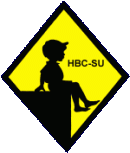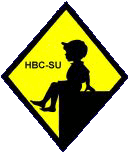
Caldicott School is a boys' preparatory school. We begin to see prep schools in the mid-19th century as parents became concerned anout sending younger boys to the country's public (elite private boarding) schools. Many modern prep schools were founded, like Cadicott, in the early-20th century. Caldicott was founded by E. Kellett and J. Heald Jenkins, teachers at The Leys School (a public school) in Cambridge. Heald Jenkins at a Victorian house near Hitchin (1902). Many early prep purchased mannor houses as the main school building. JHS McArthur, a wealthy Leys parent, offered to fund the school. It opened in Hitchin, Hertfordshire with 8 boys (1904) which oon expanded to 24 boys. Almost all private schools at the time were single gender schools, mostly boys schgools. Jenkins named the school after his new wife, Theodora Caldicott Ingram. The School built a Chapel designed by architect Mr Hayes of London (1909). The impressive Harrison & Harrison organ installed was moved along with the school to Farnham Royal. Soon after Scouting was founded by Baden Powell (1909), the School formed a troop (1912). It was led by Gordon Wood, a very keen scoutmaster. Scouting became a popular activity for the boys. A portrait that shows the boys wearing various suits with Eton collars (about 1910). Apparently there was at first no uniform requirement (figure 1). While there was no required uniform, an Eton collr seems to have been requird. Most early prep schools required suits, but there was no uniform. Most prep schools which did not have uniforms adopted them (1910s). During World War I, a German Zephlin dropped bombs on the Hithin, resulting in some damage at he school. A school account reveals, "Near the end of the 1914-1918 war, Hitchin was bombed by a Zeppelin. All the pupils were in bed when a huge overhead rattling noise developed - like several express trains - followed by some loud bangs, and the ground shook. Mr Jenkins came round the dormitories and took all the boys down to the dining room where apples and biscuits were dispensed. Some of the staff took refuge (very sensibly in fact) under the tables, while others thoroughly enjoyed the experience. Next day a general expedition was undertaken to inspect some holes about 10ft across and 3 or 4 feet deep fairly near the railway." One wonders what the Germans though that just chucking out bombs, often in the dark, without any way of targeting military facilities would assist their war effort. The Zephlins did very little damage during the War, but largely because of the Zeppelins, the British out of outrage and fear were prepared when the Germans came again (1940). And the Germans tried it again. The boys pitched in during the War by working on the land. also used to help the war effort by working on the land and helping out at an Army canteen. A war memorial was dedicated to pupils who died in the War (1919). Vereker Bindon was appointed Headmaster on probation for one year (1919). His post was confirmed (1920). Mr Bindon left Caldicott and Mr. F. Gordon Wood took over as the new Headmaster (1927). He ran the school along with Margaret Ingram. Wood and Mr. J Shewell Cooper became joint headmasters (1936). The School moved to a new site, a Victorian home located in Farnham Royal, Bucks. It was across the road from from the beautiful woodlands of Burnham Beeches about 20 miles outside London (1938). This is a National Nature Reserve owned by the City of London Corporation is adjacent to the grounds and is often used by the boys. This may have been war related, but we do not have details. Fortuntely the school was well outside of London where the German Luftwaffe concentrated their bombing. We do not have much information on the school uniform, but we have a school portrait of the boys in their summer uniform (we think in the 1950s). Cooper House was formed, taking the number of houses to the current four: Cooper, Jenkins, McArthur and Wood (1970). Houses were an imprtant part of public schools. The houses functioned differently in most prep schools. Like most established prep schools, Caldicott added apre-prep section. a National Nature Reserve owned by the City of London Corporation is adjacent to the grounds and is often used by pupils.The Sports Hall was built, and opened by Bill Beaumont (1982). The Chapel was extended to accommodate four year groups (1982). The school was founded as a boarding school, but now has a more flexible approch to boarding as modern parents are more concerned to with boarding younger boys. Caldicott unlike many prep schools today continues to be a boys' school.
Related Chronolgy Pages in the Boys' Historical Web Site
[The 1900s]
[The 1910s]
[The 1920s]
[The 1930s]
[The 1940s]
[The 1950s]
[The 1960s]
[The 1970s]
[The 1980s]
Navigate the Boys' Historical Clothing School Uniform Pages
[Return to the Main English individual school page]
[Australia]
[England]
[France]
[Germany]
[Ireland]
[Italy]
[Japan]
[New Zealand]
[Scotland]
[United States]
Navigate the HBC School Section
[About Us]
[Activities]
[Chronology]
[Classrooms and buildings]
[Clothing styles]
[Countries]
[Debate]
[Economics]
[Garment]
[Gender]
[Hair]
[History]
[Home trends]
[Literary characters]
[School types]
[Significance]
[Transport and travel
[Uniform regulations]
[Year level]
[Other topics]
[Images]
[Links]
[Registration]
[Search]
[Tools]
[Return to the Historic Boys' School Home]
